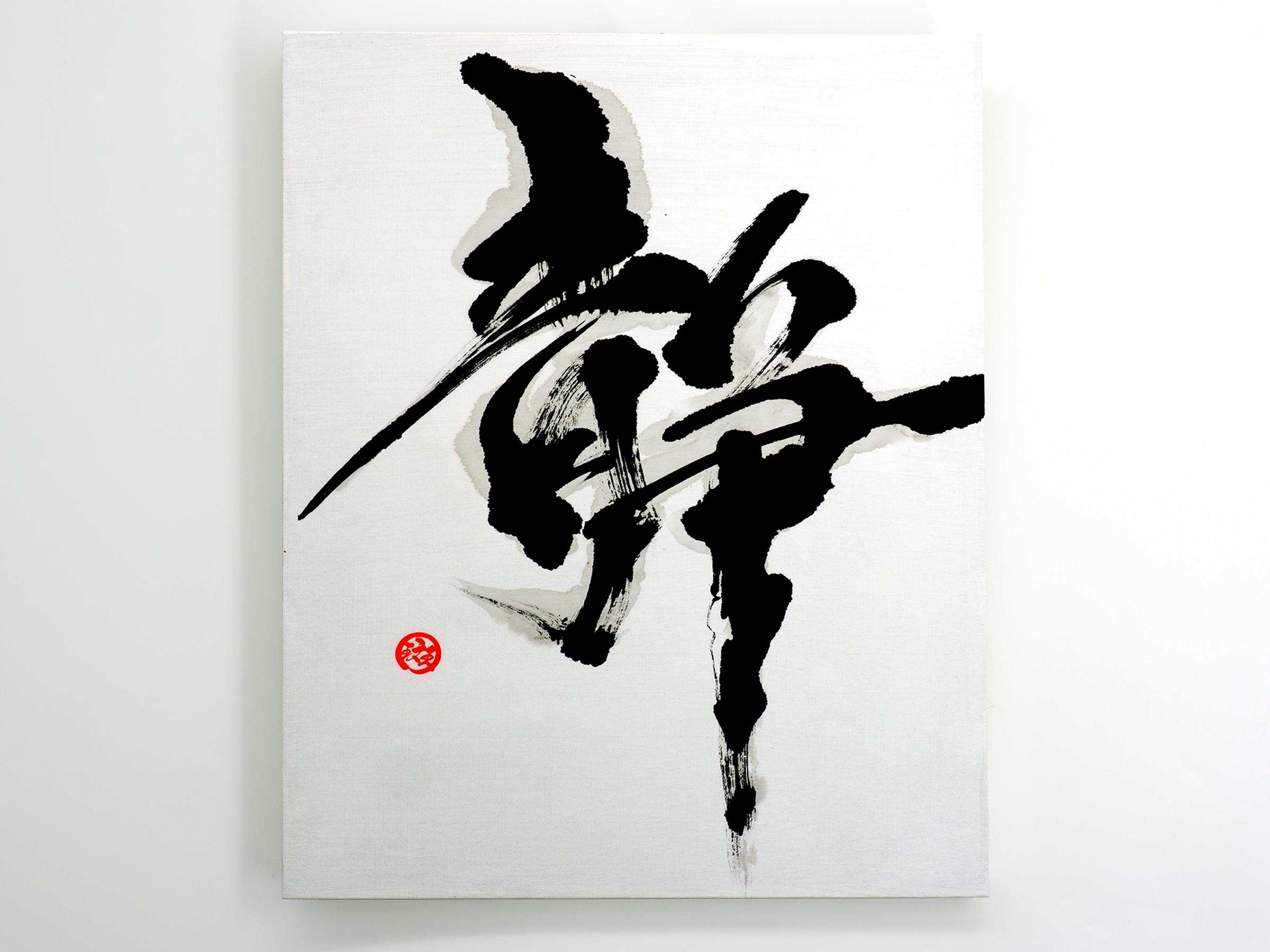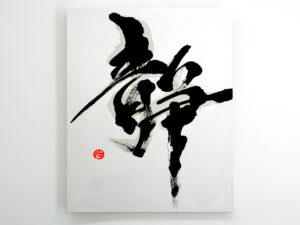Image of the work
You can enlarge the photo by tapping on it.
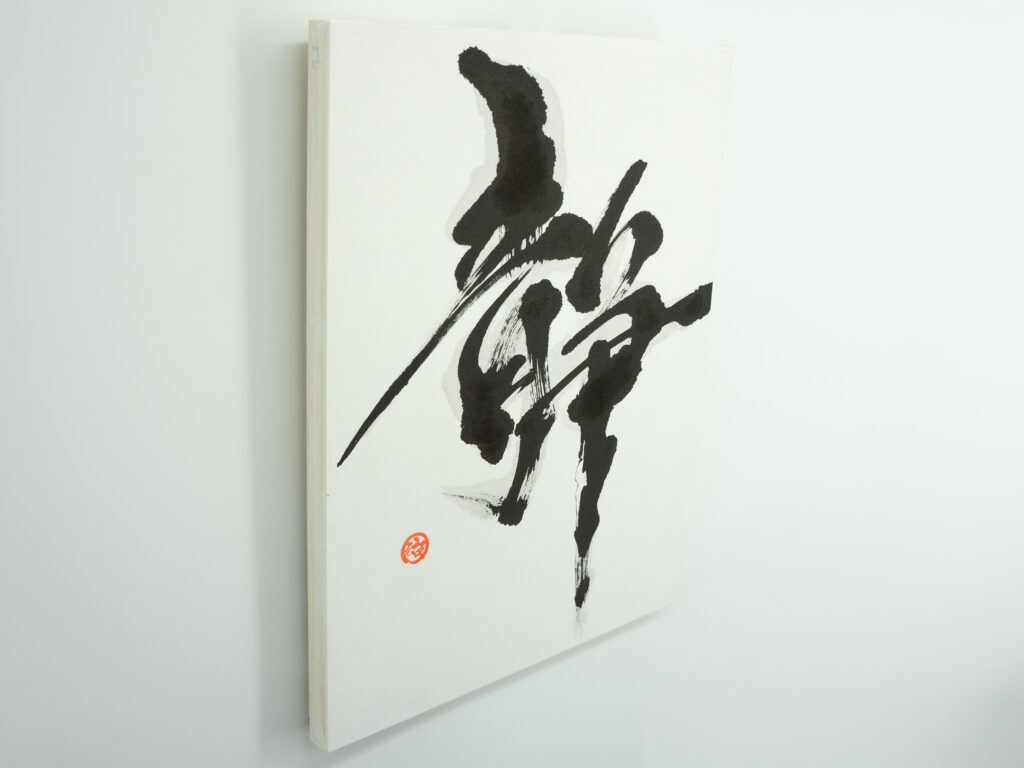
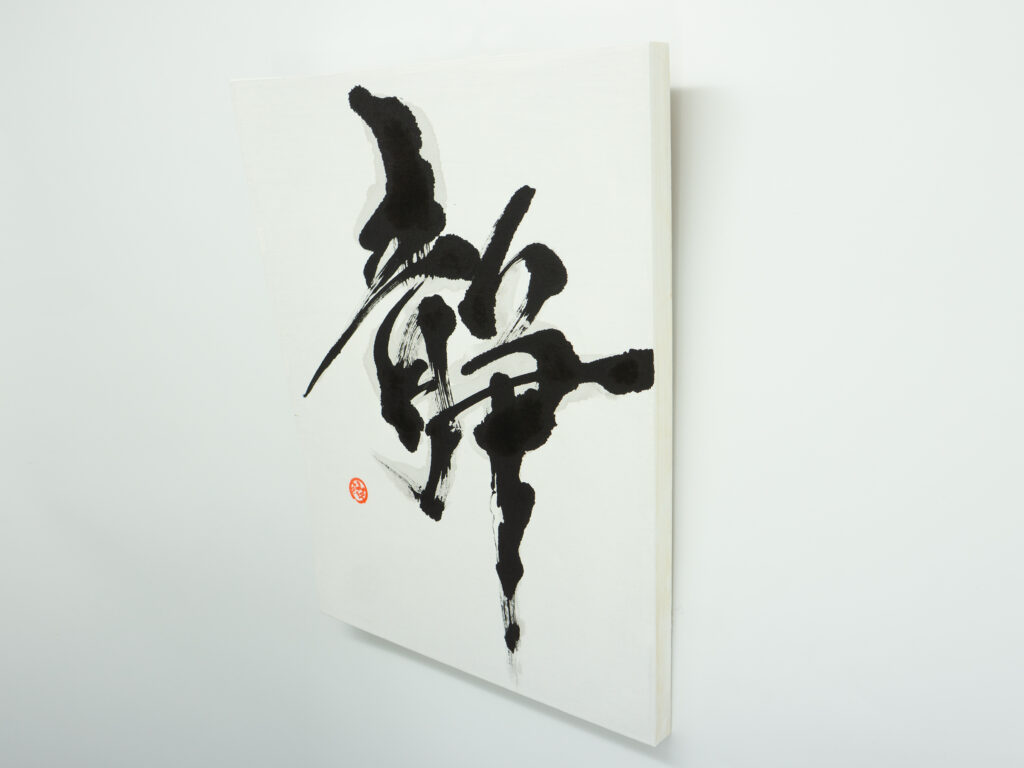
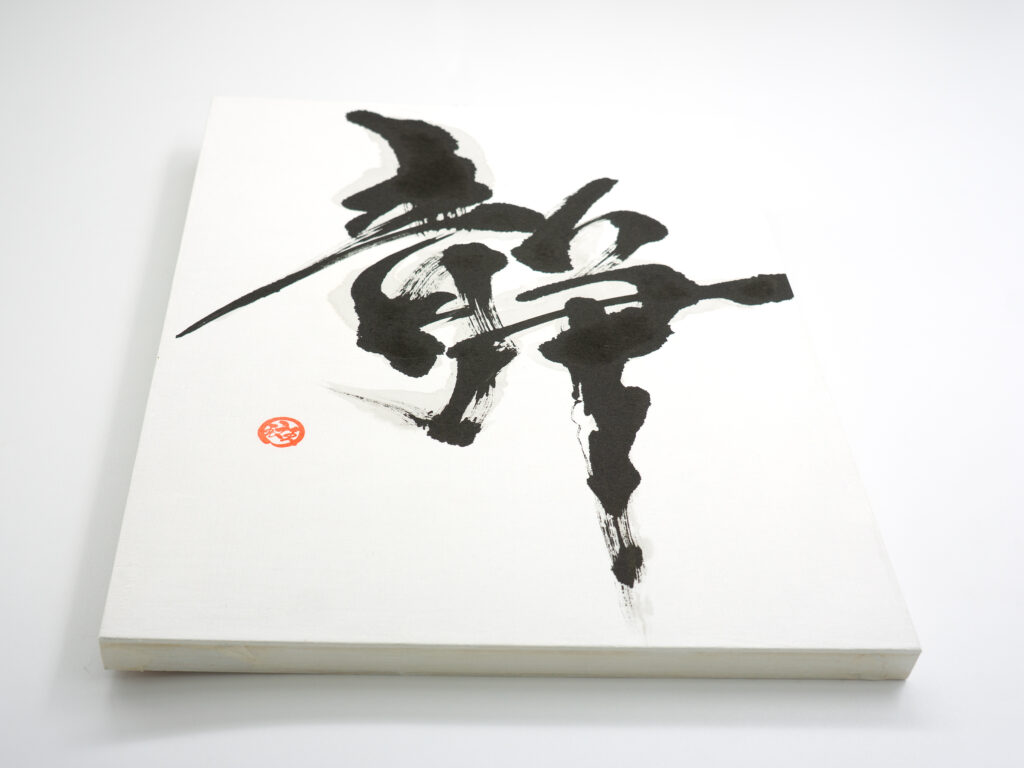
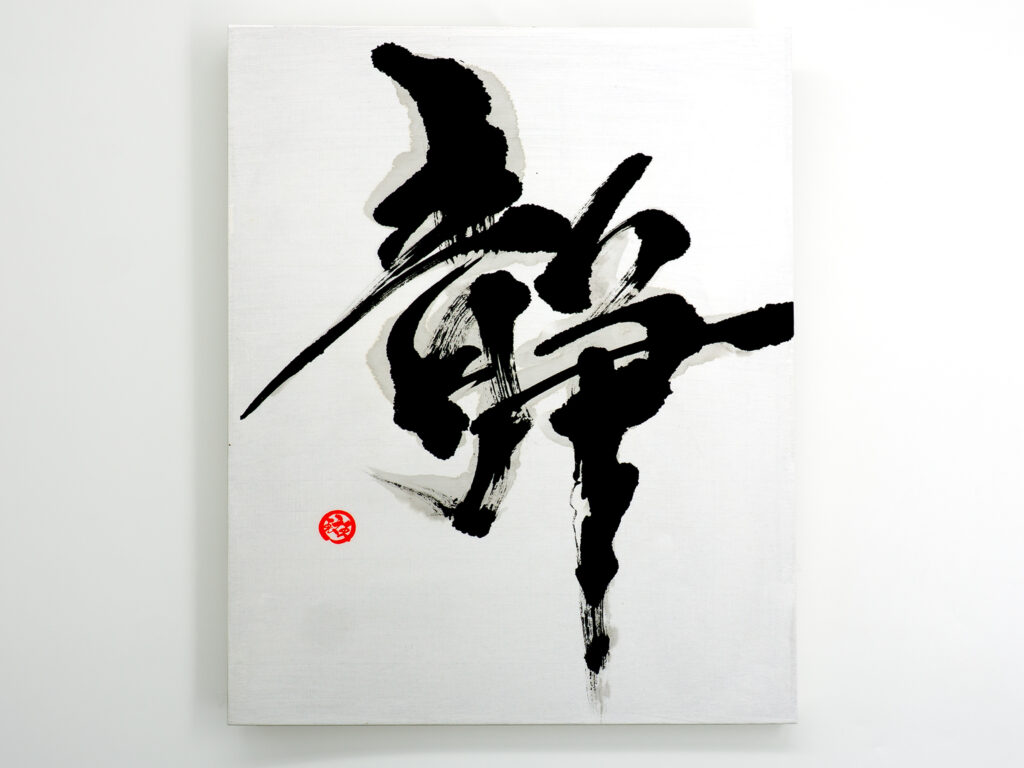
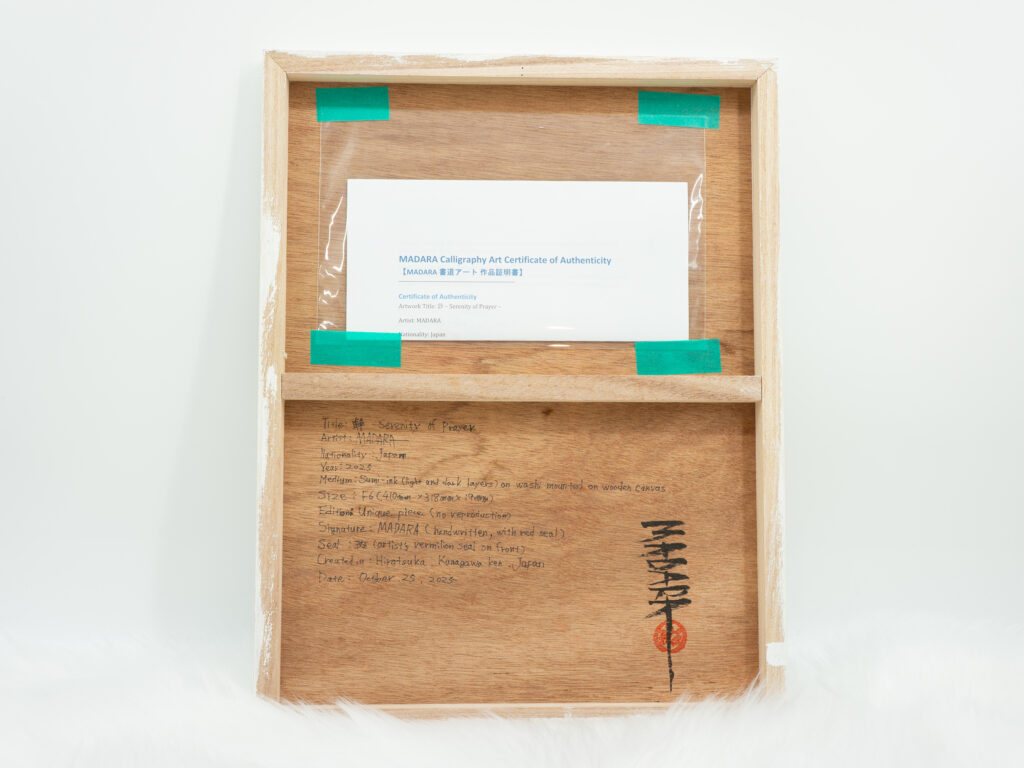
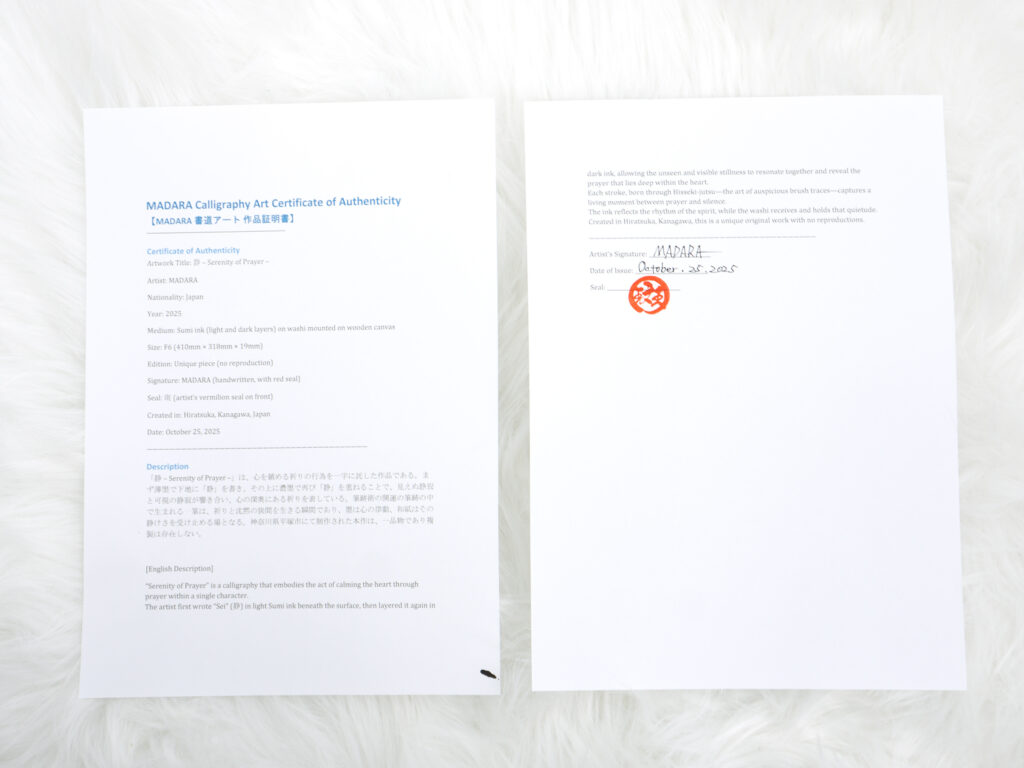
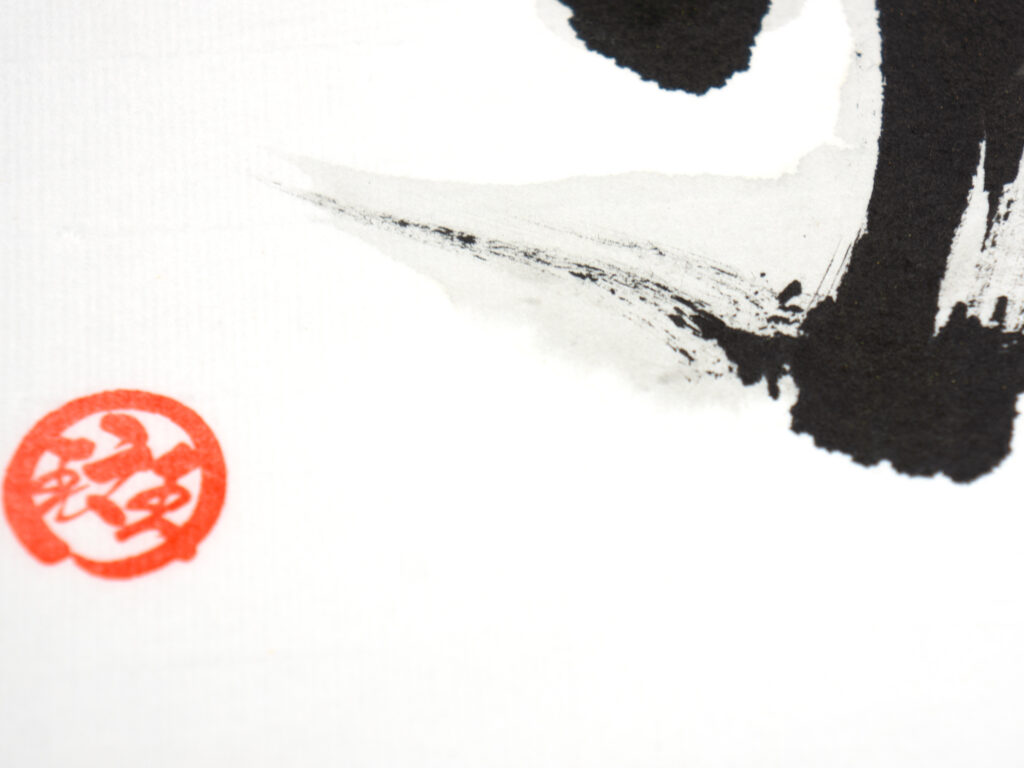
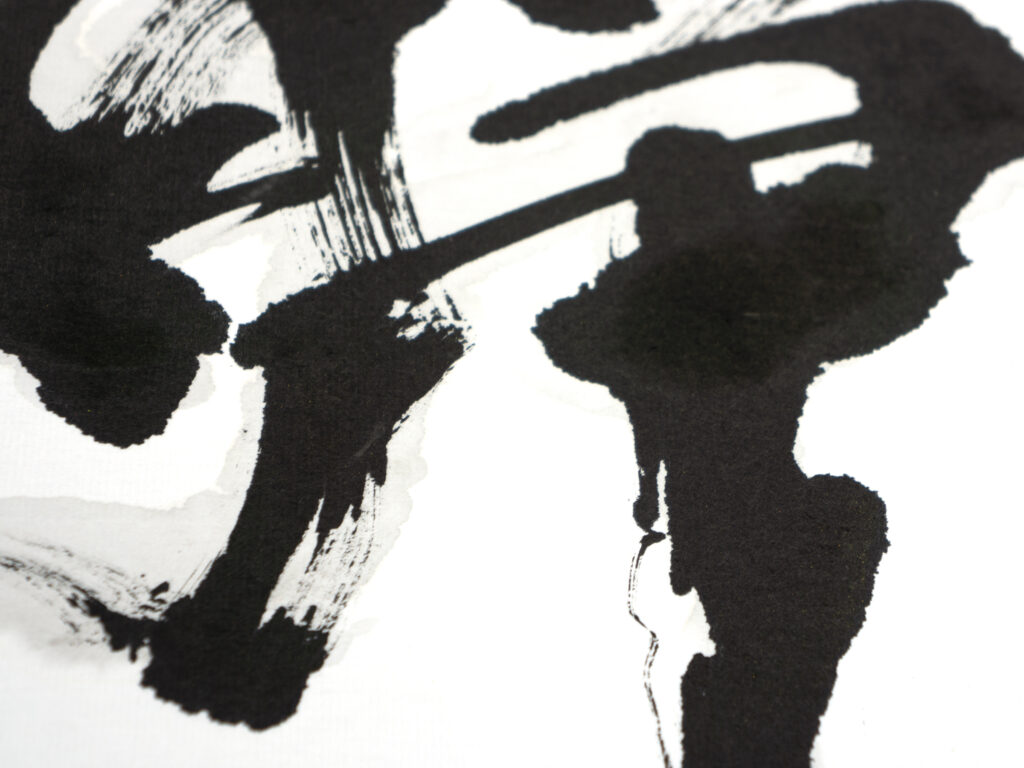
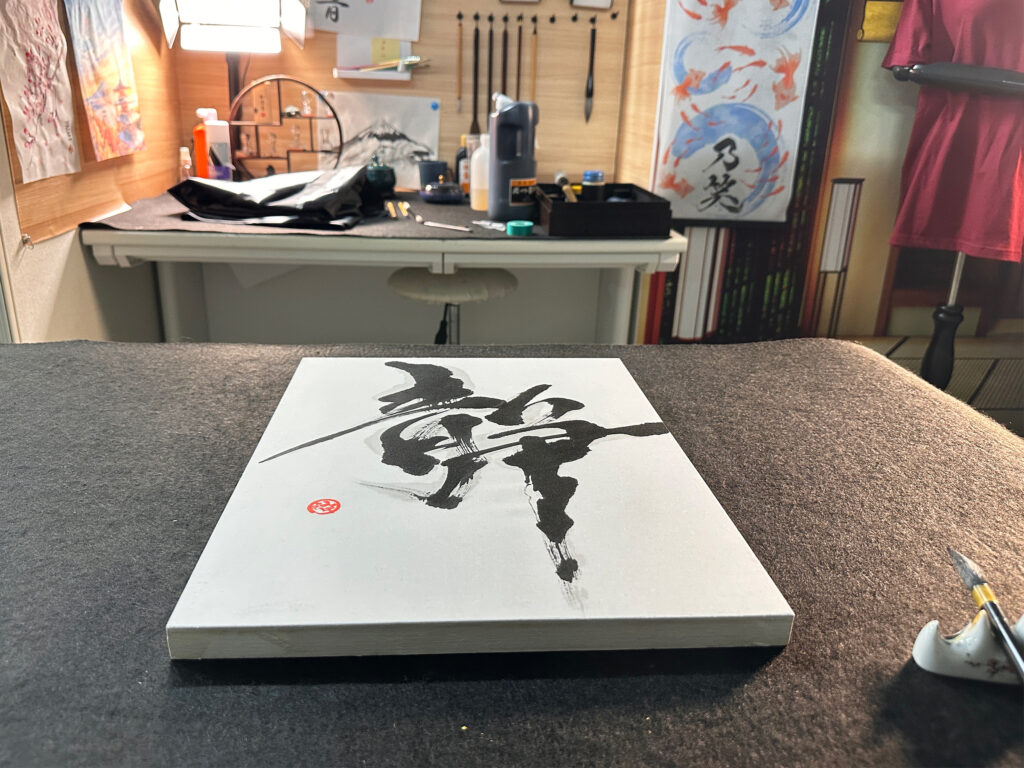
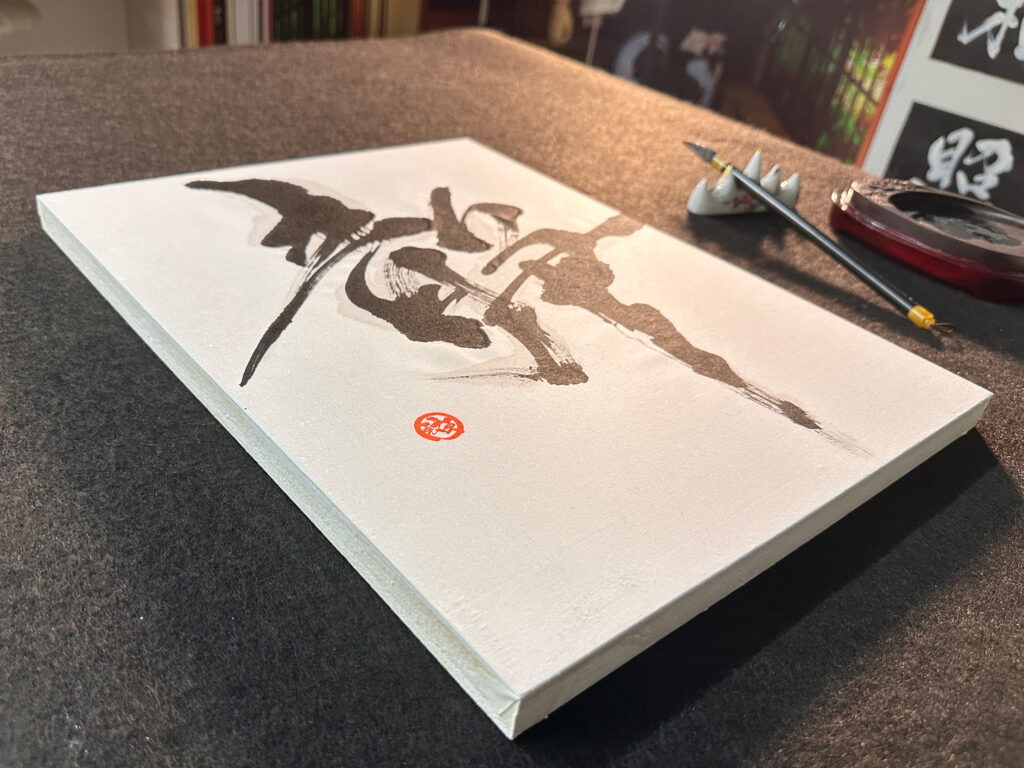
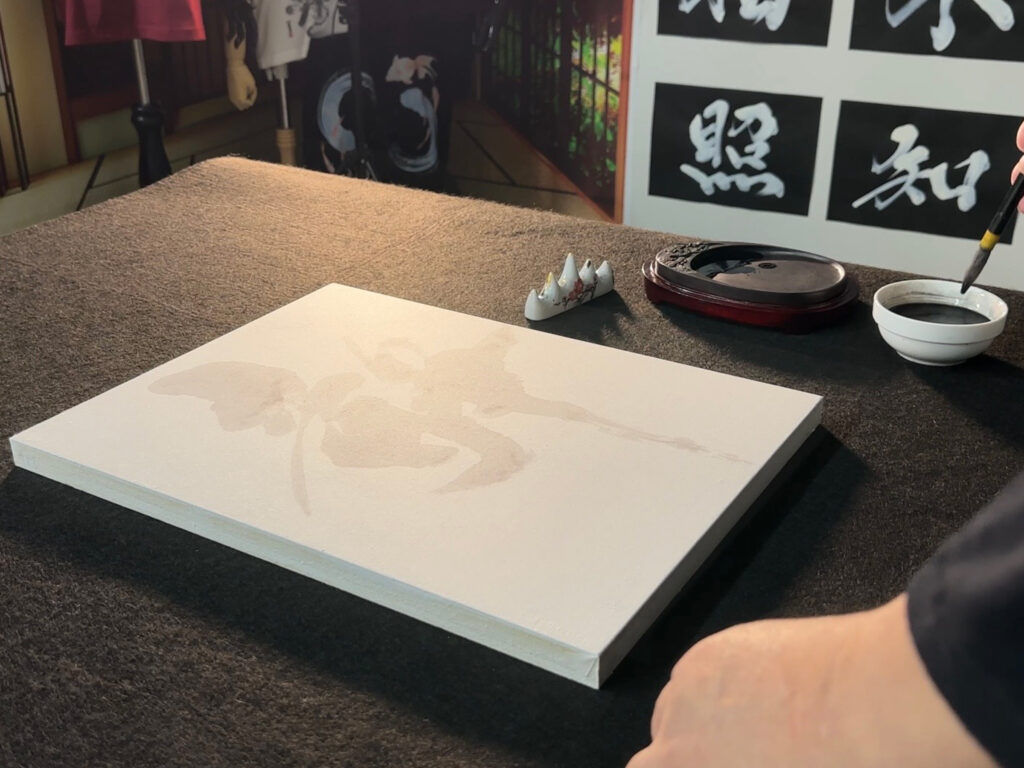
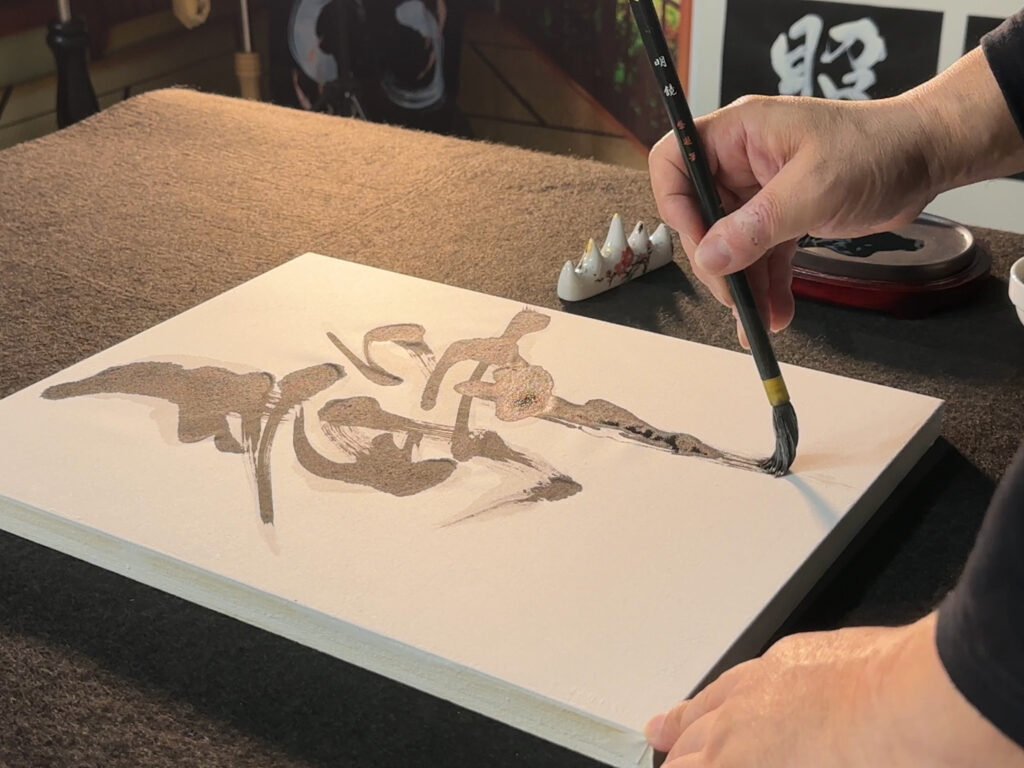
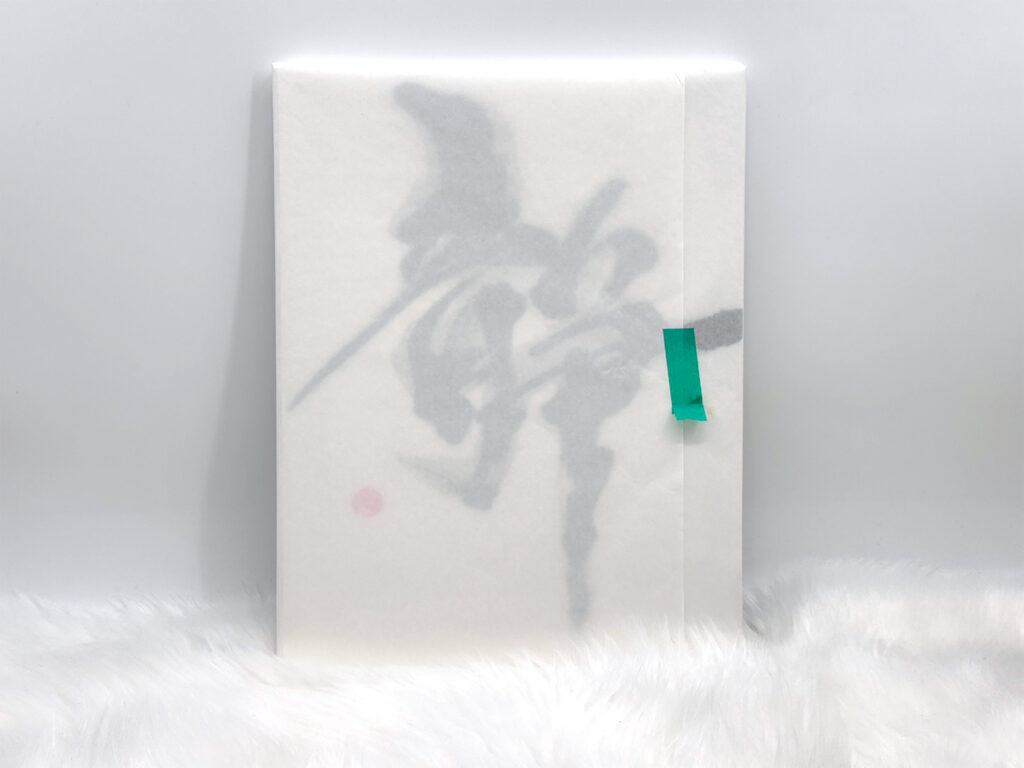
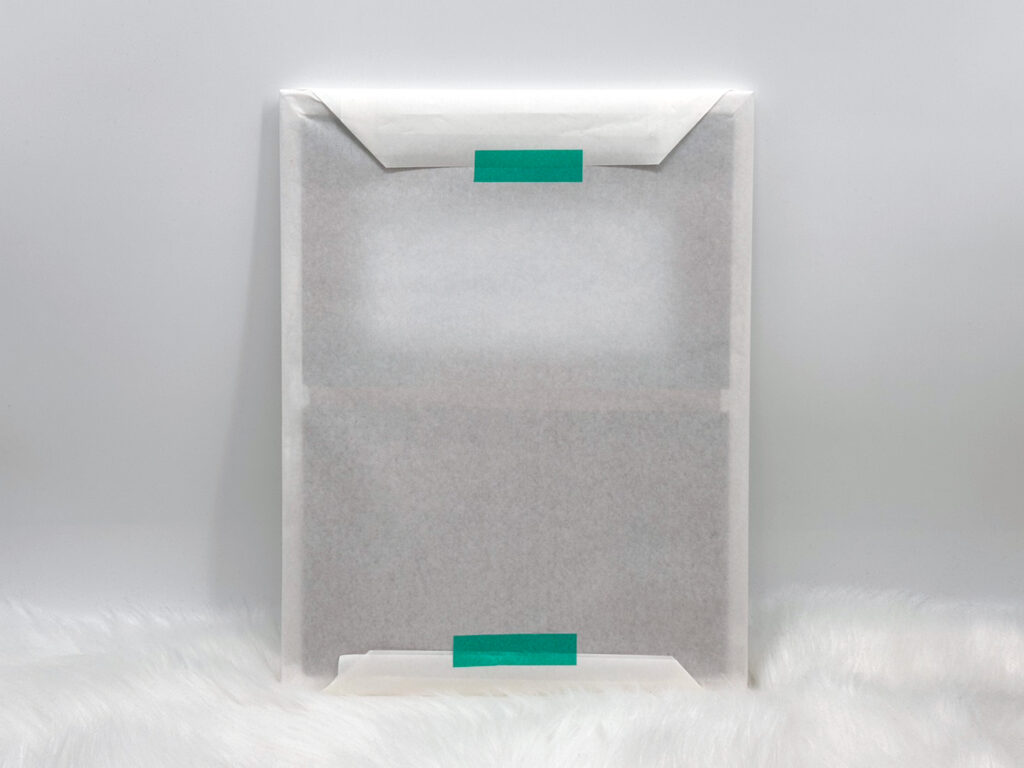

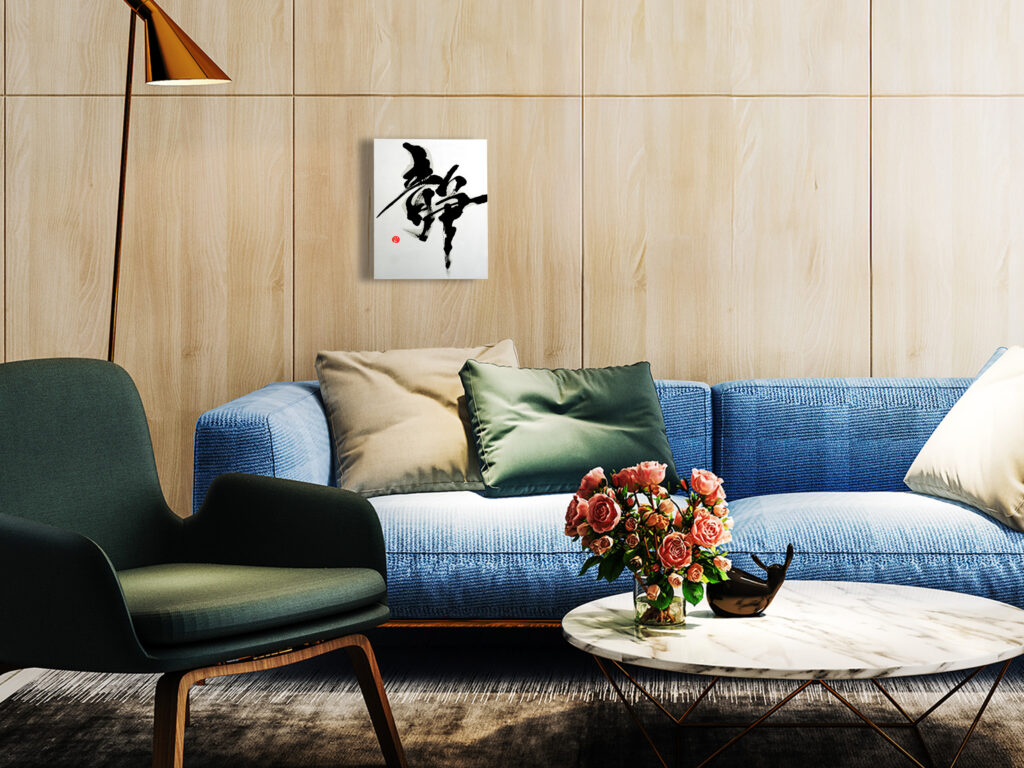
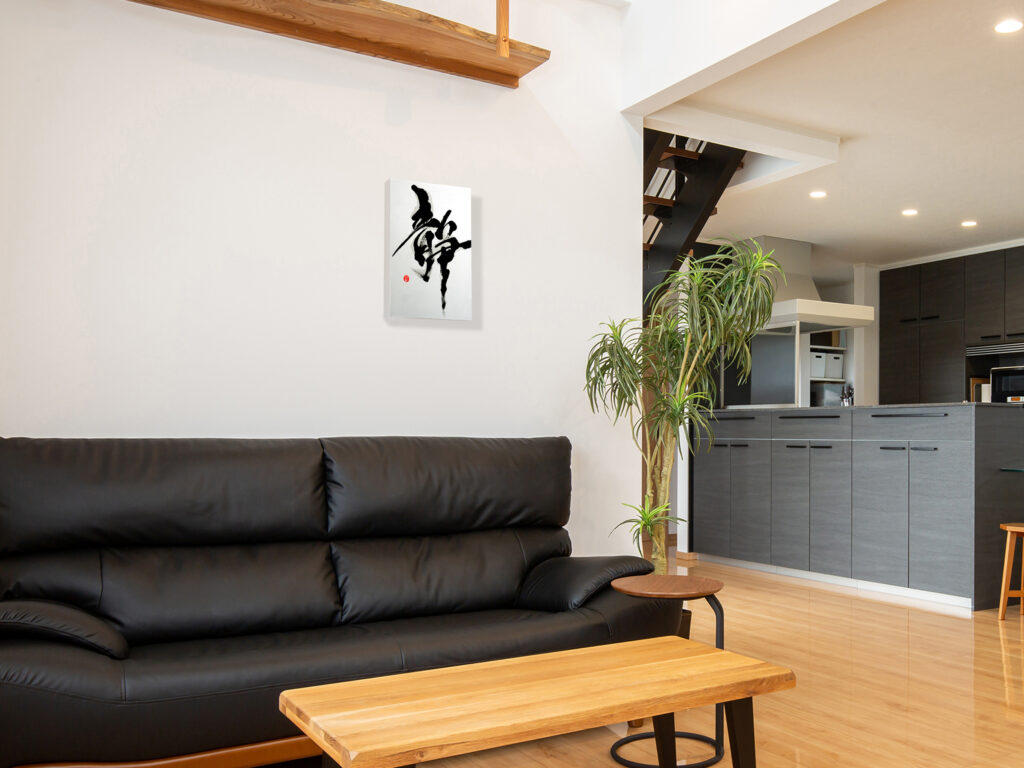
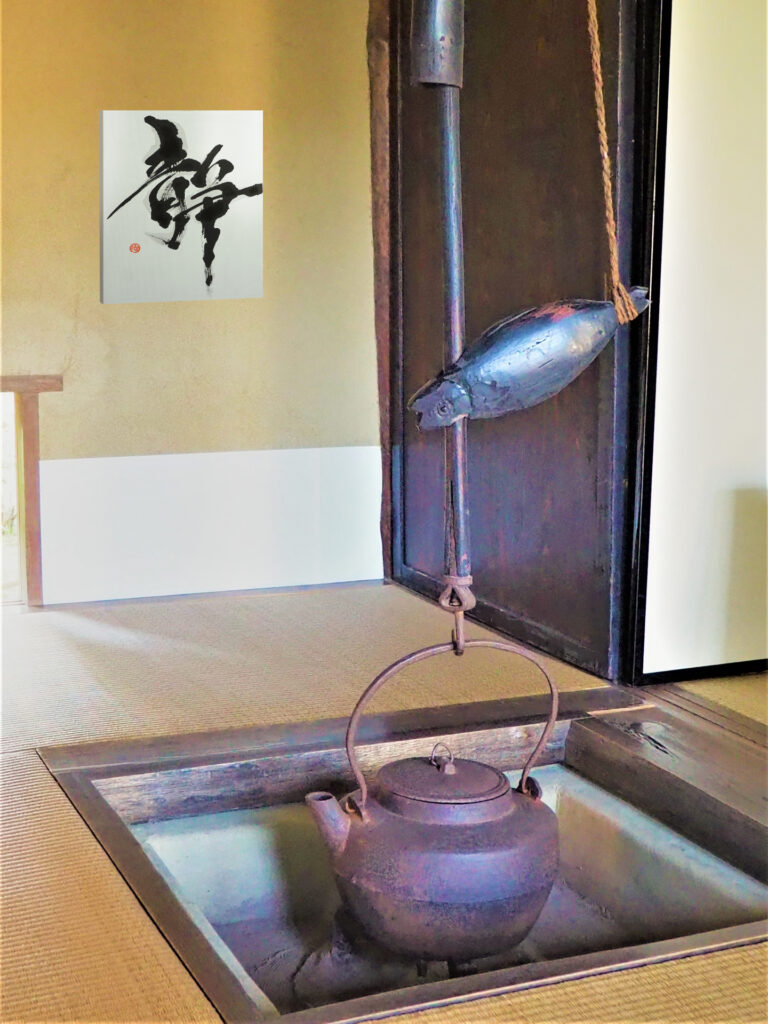
The worldview of the wor
Artist: MADARA
“Serenity of Prayer” represents the fusion of “prayer” and “Hisseki-Jutsu,” the essence of MADARA’s calligraphic philosophy.
The character “Sei” (静) does not signify the mere absence of sound, but the serenity born from calming the inner waves of the heart.
In a world that accelerates with information and excess words, people have come to fear silence.
Yet silence is not emptiness—it is the origin of existence itself.
Within that stillness lies the space where the soul can recover its true voice.
In this work, the first “Sei,” written in light ink, symbolizes an invisible prayer—an inner source of tranquility hidden beneath the surface.
The second “Sei,” layered above in darker ink, embodies the will to express that inner prayer in form.
The resonance between the unseen and the seen—this is the essence of the human spirit.
The gradation of ink wavers like emotional tides, and the washi paper gently receives its vibration.
With each movement of the brush, prayer trembles, and the ink comes alive.
“Sei” is not stillness—it is proof that life continues to pulse, a state of “living silence.”
It is a moment of meditation, a record of prayer, and a resting place for the soul.
For MADARA, “Sei” is infinity contained in a single breath—“a silence of light” that lives within the art of calligraphy.
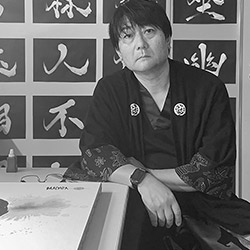
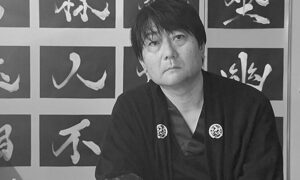
Behind the Scenes
This work “Sei – Serenity of Prayer –” was created on October 25, 2025, at MADARA’s atelier in Hiratsuka, Kanagawa, Japan.
On that morning, the artist walked straight toward the sea.
A soft southern wind blew, and a quiet misty rain fell upon the shore.
Upon returning, MADARA wrote the first “Sei” in light ink upon a wooden canvas, capturing that tranquil landscape and inner stillness.
For the artist, this act marked the beginning of fulfilling a heartfelt intention.
The light ink served as an “unseen voice,” a visualization of the stillness within the soul.
Then, as the darker ink was layered above, the prayer became visible—the rhythm of life and the will to “live within serenity” emerging powerfully onto the surface.
When the brush touched down, the heart was both empty and full—at once still and overflowing.
In that single instant, past and future, light and shadow, life and death dissolved into one continuum.
Through this act, MADARA reached a single realization: to live is to pray.
After completion, the artist pressed the red seal “斑 (Madara),” and as the scent of Sumi ink filled the room, a deep stillness descended.
Within the continuous flow of brush traces lies the unbroken conviction of Hisseki-Jutsu—writing born of life itself.
The work was created in F6 size to harmonize with the quiet intimacy of a Japanese tea room, modest in scale yet rich in spiritual presence.
“Sei” is not merely a piece of calligraphy; it is the visible form of the “harmony of the heart” that MADARA has long pursued—
a prayer that awakens a new silence within all who stand before it.
Kanji meaning
Meaning of the Kanji “Sei” (静)
The character “Sei” (静), meaning “serenity” or “stillness,” carries a depth that goes far beyond the idea of silence.
It is composed of two elements: “青 (sei)”, which signifies purity and clarity, and “争 (araso)”, which originally represented movement or conflict.
Together, they form a profound concept: “clarity within movement.”
Thus, “Sei” does not merely indicate the absence of sound or motion—it expresses the harmony found within the flow of life.
It is the state where calmness and vitality coexist, where the mind remains undisturbed even amidst change.
In ancient Chinese philosophy, Laozi described “stillness” as the root of all things, and Zhuangzi called it “the unity between heaven and the heart.”
In this sense, “Sei” represents the moment when one’s spirit aligns with the rhythm of the universe.
In the art of calligraphy, “Sei” is not only written but also lived.
It appears in the quiet moment before the brush touches paper, in the breath that steadies the hand, and in the pause that completes a stroke.
It is the presence within absence—the vibration of life inside stillness.
Therefore, “Sei” embodies more than silence; it is the courage to remain in harmony while living.
It signifies prayer, peace, balance, and enlightenment—the state of a heart that is both tranquil and alive.
Work details
| item | Content |
|---|---|
| The basis of the work | Wood Campus |
| Material | wood, Japanese paper(Washi) |
| Size | F6 12.5in(318mm) × 16.1in(410mm)×0.75in(19mm) |
| Materials used | Sumi-ink |
| Finishing the work | The wooden canvas is primed with gesso, calligraphy paper (washi paper) is pasted on top, and the painting is finished with ink. |
| Regarding domestic and international shipping | ・International shipping available: Ships via FedEx if no designated shipping company is specified. ・Domestic shipping in Japan: Ships via Yamato Transport if no designated shipping company is specified. |
| Packaging at time of shipment | We can also accommodate requests for packaging such as simple packaging and heavy-duty packaging, so please contact us for details. |
| Shipping | Decisions will be made in consultation with the buyer, such as using transportation suitable for art works and taking out insurance. |
| Compensation for works | The artwork will be delivered in the same condition as when it was sold. If you would like to purchase art insurance, we are happy to discuss this. |
| Payment Method | The payment amount is the artwork price plus shipping. Payment can be made by credit card. |
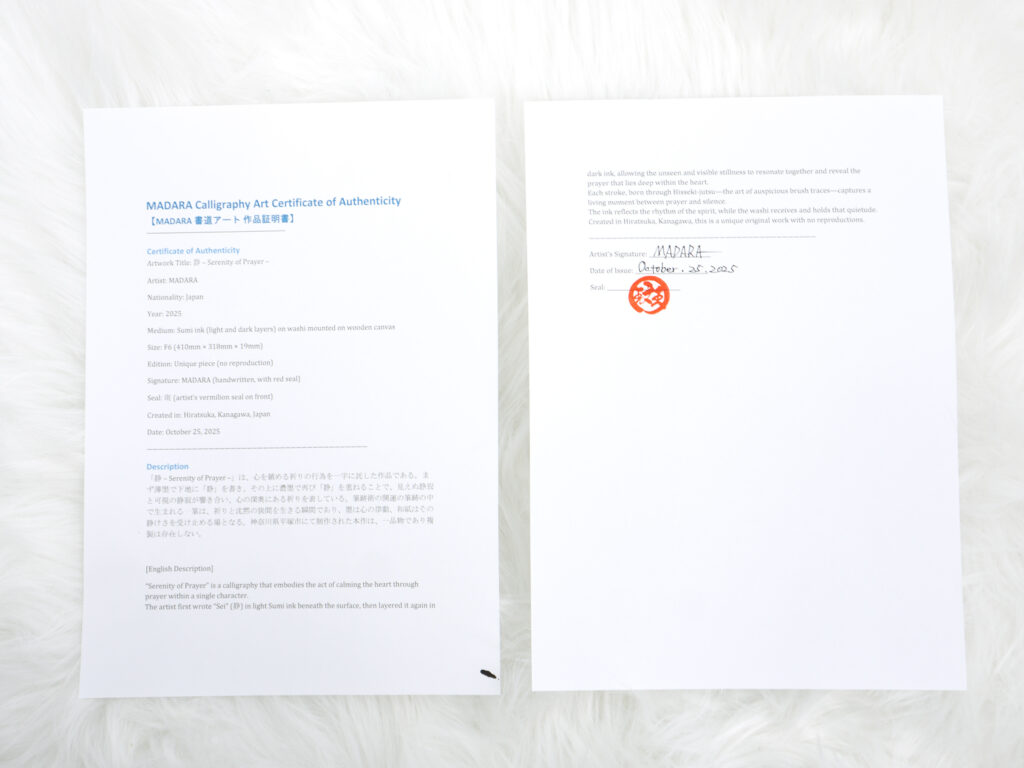
A certificate of authenticity is included.

